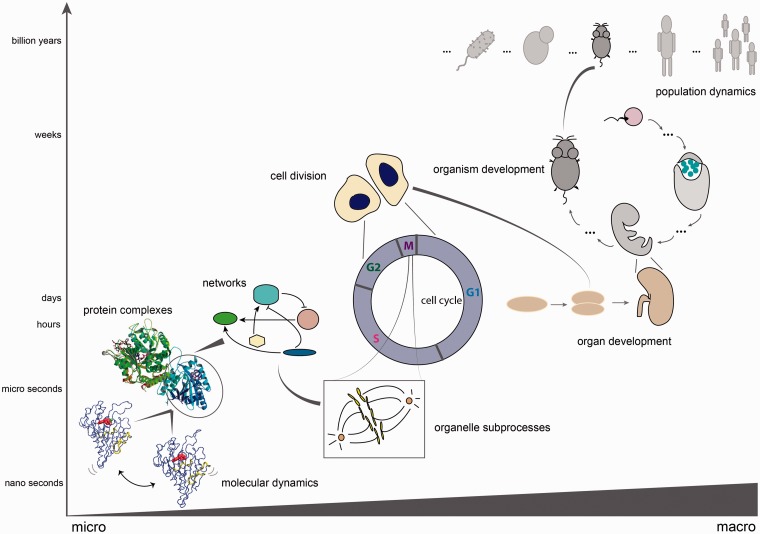Figure 1:
Different biological time scales. Timing of processes scales with size: from the long-term evolutionary processes at the population level, to dynamics within a single population, timing during organism and organ development, down to cellular and subcellular processes: cell division as the final point of the cell cycle, which is orchestrated by a large network of proteins interacting to achieve several states (shown: mitotic spindle checkpoint). Within the network of proteins, timing does not only play a role at the level of transient interactions or complex formation (shown: a kinesin complexed to microtubule, PDB code 2P4N), but also at the level of single molecules (shown: dynamics simulations of kinesin motor protein, as obtained from the DSMM database [2]).

